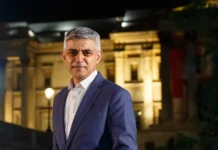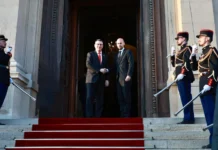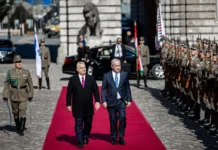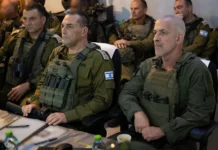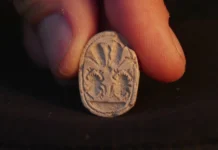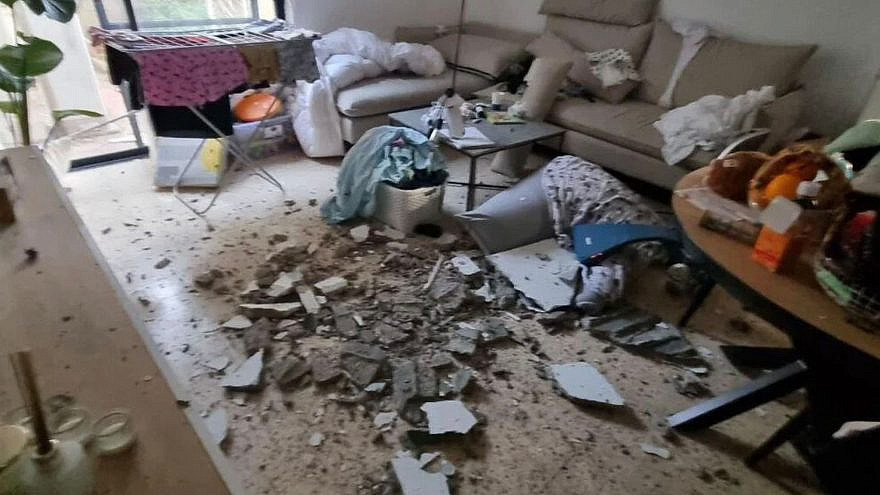With some 10 airstrikes on Hamas targets in Gaza and four in Lebanon overnight Friday, Israel sent its message to Hamas.
Israel made clear that the Palestinian terror faction cannot keep its main base of Gaza out of the line of fire.
It also made clear that Israel sees Hamas’s Lebanese and Gazan activities as belonging to a single entity. While Israel is prepared to strike targets in Lebanon in response to attacks from there, it views the Gaza Strip as the main return address for Hamas activities, no matter where they occur.
That presents a challenge to Hamas’s attempt to keep Gaza, the enclave where it rules over two million people and where its terror army is based, safe. The question going forward is whether Hamas will draw the correct conclusions regarding future attempts to attack Israel from other arenas, including Judea and Samaria, commonly known as the West Bank—or whether it feels it can weather such strikes and ignore the Israeli warning that it will strike harder next time.
It was a critical message for Israel to send, after Hamas, likely with Iranian backing, carried out a multi-arena assault on Israel in recent days, one in which Lebanon formed the main front.
Overnight, Palestinian terror factions led by Hamas fired 44 rockets at southern Israel: 23 crossed into Israeli territory and eight were intercepted by Iron Dome. One rocket got through the air defenses and hit a home in Sderot, causing damage. There were no Israeli casualties.
In Gaza, the Israel Air Force hit Hamas weapons production sites, posts and tunnels near the border fence. In southern Lebanon, the IAF hit four Hamas terrorist targets including a multi-barrel rocket launcher and what it described as “terror infrastructure.”
Hamas, Iran sense an opportunity
On Thursday, Hamas with the backing of Iran and the nod of Hezbollah saw a new opportunity to challenge Israel while exploiting tensions—which the Palestinian terror group itself helped to stoke—around the Temple Mount in Jerusalem.
Hamas activated rocket-launching cells in southern Lebanon and conducted the largest-scale projectile attack on northern Israel since the 2006 Second Lebanon War, hours after it enabled other terrorist factions in Gaza to escalate in the South by firing rockets at Israeli communities, thereby implementing its multi-arena attack strategy but trying to keep Gaza out of the way of the main Israeli response.
Hamas has spent years building rocket production and launch capabilities in Lebanon, with the assistance and supervision of the Iranian Quds Force’s Palestine Division, according to detailed research conducted by the Alma Research and Education Center, which specializes in Israel’s northern security challenges.
Hamas’s deputy politburo chief Salah al-Arouri, who is based in Beirut and is also responsible for orchestrating terrorism in Judea and Samaria, is a key player in these efforts.
Hamas politburo chief Ismail Haniyeh landed in Beirut on Wednesday for talks with other Palestinian terror chiefs. It is difficult to believe that Hezbollah, hosting these activities and in control of southern Lebanon, was not aware of Hamas’s plans.
For Iran, Hamas’s capabilities in Lebanon form another tool it can rely on to turn up the pressure on Israel and promote the overall strategy of surrounding Israel with a ring of fire.
The Alma Center’s research found that on the surface, Shi’ite Hezbollah and Sunni Hamas exhibit a unity of interests when it comes to fighting Israel, despite the ideological differences between them.
The joint interest allows the radical Shi’ite axis headed by Iran to cooperate with the Palestinian Sunni Muslim Brotherhood movement to which Hamas belongs, working under the common banner of “the Palestine ideology.”
Iran identifies Hamas as the lead force in the Palestinian arena, and therefore keeps it close, while Hamas sees Iran as the only state backer (after the 2013 fall of Mohamed Morsi’s Islamist regime in Egypt) that can provide it with military and financial assistance.
The Temple Mount at the center
According to IDF spokesman Lt. Col. Richard Hecht, the current escalation began on Tuesday evening when images spread of clashes between Israeli police and Palestinian rioters armed with rocks and fireworks, who barricaded themselves in the Al-Aqsa Mosque. The rioters fired fireworks and hurled rocks directly at security personnel while shutting the mosque doors from the inside, preventing Muslim worshippers from leaving.
Police had little choice but to confront them in the mosque since allowing them to spend the night there would have created the conditions for dangerous attacks the next morning on Jewish worshippers in the Western Wall plaza below and perhaps on non-Muslim visitors to the Temple Mount.
The youths were acting based on ongoing and heightened radical Islamist incitement in Palestinian social media, much of it produced by Hamas on the occasion of the Ramadan holiday.
Those clashes were then seized upon by a Palestinian terror faction in Hamas-ruled Gaza to fire two rockets on Wednesday evening, when millions of Israelis were celebrating the Passover Seder. One rocket hit near the border fence at Kissufim and the second failed to cross the border.
Shortly before 6 am on Thursday, the escalation continued when Hamas fired surface-to-air missiles, which exploded in mid-air over Gaza. This was a clear signal that Hamas was taking ownership of the Temple Mount tensions and was ready to join an escalation, though the move was calculated to stop short of involving Gaza in a full-scale conflict at that time.
Then, on Thursday afternoon, the largest rocket attack from Lebanon on northern Israel since the 2006 war took place.
Palestinian terrorists in Lebanon, led by Hamas, fired 34 rockets. The Iron Dome air defense system intercepted 25 of them. Two struck in Israeli communities—one in Fassuta, a Melkite Christian village, and one near a warehouse in the town of Shlomi. The IDF is searching for the impact sites of three additional rockets.
“We don’t get to that level of interception without being ready,” said Hecht.
As the IDF held a series of assessments to learn more about the attack and formulate response options for the Cabinet, mortar shells fired at the city of Metula struck near the Blue Line Lebanese border on Thursday evening.
“This is a Palestinian-oriented event, mainly Hamas, possibly with the involvement of Palestinian Islamic Jihad,” said Hecht. “We assume Hezbollah probably knew about it, and Lebanon bears responsibility. We are checking if Iran is involved,” he added.
Hecht praised Iron Dome for allowing Israeli decision-makers to make choices “from the head and not the gut.”
The coming day and weeks will make clear whether Hamas and its Iranian backers understood Israel’s message.

